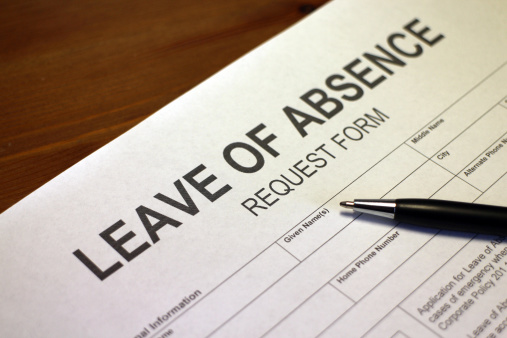BYOD stands for bring-your-own-device and it’s a concept that’s gaining in popularity among most major companies, especially those that allow telecommuting. Most employer policies on BYOD cover productivity and ensuring the employees are using the righ…
Planning for 2015 – Open Enrollment and Other PPACA Issues
Tuesday, August 12, 2014
2:00 p.m. ET / 11:00 a.m. PT
With all of the recent changes flowing from PPACA, it is important not to forget some very basic and long-standing aspects of plan compliance, design, drafting and administration, particularly those rooted in significant part in a law enacted 40 years ago, the Employee Retirement Income Security Act, also known as “ERISA.”
 Last June, the U.S. Supreme Court ruled that a part of the Defense of Marriage Act (DOMA) that limits the definitions of “marriage” and “spouse” to opposite sex marriages and spouses is unconstitutional. Since then, the Department of Labor (DOL), the Internal Revenue Service (IRS), and the Department of Health and Human Services (HHS) have issued several notices that provide that, for purposes of federal taxes and employee benefits, a person legally married to a same-sex person in any state or foreign country is considered married even if he or she moves to a state that does not recognize same-sex marriages.
Last June, the U.S. Supreme Court ruled that a part of the Defense of Marriage Act (DOMA) that limits the definitions of “marriage” and “spouse” to opposite sex marriages and spouses is unconstitutional. Since then, the Department of Labor (DOL), the Internal Revenue Service (IRS), and the Department of Health and Human Services (HHS) have issued several notices that provide that, for purposes of federal taxes and employee benefits, a person legally married to a same-sex person in any state or foreign country is considered married even if he or she moves to a state that does not recognize same-sex marriages.
In contrast to this “state of celebration” approach, under the Family and Medical Leave Act (FMLA) an employee is considered married — or unmarried — based on the law of the state in which he or she lives when FMLA begins. The DOL has now issued a Proposed Rule that would change the FMLA definition of spouse to match the definition that is being used for other purposes — that is, if an employee who is legally married to a same-sex individual requests FMLA to care for the same-sex spouse, or the same-sex spouse’s child, FMLA would be available even if the employee lives in a state that does not recognize same-sex marriage. The federal government does not consider civil unions or legally recognized domestic partnerships as marriages, so this change would not affect employees with these arrangements.
Employers should continue to use the employee’s place of residence to determine whether FMLA should be offered until the proposed change becomes final. Comments on the proposed change may be made until August 22, 2014, so the earliest this change would be effective is sometime this fall. Employers, of course, are free to offer leave even though it is not legally required.
The DOL has issued an FAQ on the proposed rule that employers may find helpful.
For further information including best practices in FMLA, attend UBA’s webinar, “Curbing FMLA Abuse,” on Thursday, July 10, 2014, at 2:00 p.m. ET / 11:00 a.m. PT. Go to http://bit.ly/1pJqIfR and enter code UNUMUBA for a $149 discount.

Does your company have employees who are tired of the daily grind that is commute to the office, perform duties with coworkers, and then commute home? Have you considered just how badly they may want to work from home — or from any location for that m…
 The Family and Medical Leave Act (FMLA) regulations that became effective in 2009 provide employers with mechanisms by which we can better curb FMLA abuse. However, there are also some traps employers can fall into if they do not review the regulations carefully and administer leave requests appropriately.
The Family and Medical Leave Act (FMLA) regulations that became effective in 2009 provide employers with mechanisms by which we can better curb FMLA abuse. However, there are also some traps employers can fall into if they do not review the regulations carefully and administer leave requests appropriately.
The following are the top 10 mistakes employers make that allow FMLA abuse and can create liability for employers:
Employers need to know the laws so they can adopt leave policies that prevent abuse while maintaining compliance.
For further information including best practices in all of the top 10 areas of FMLA mistakes, attend UBA’s webinar, “Curbing FMLA Abuse,” on Thursday, July 10, 2014, at 2:00 p.m. ET / 11:00 a.m. PT. Go to http://bit.ly/1pJqIfR and enter code UNUMUBA for a $149 discount.

WisdomWorkplace Webinar
Thursday, June 19, 2014
2:00 p.m. ET / 11:00 a.m. PT
On June 30, 2014 the U.S. Supreme Court issued a decision in a case generally referred to as the Hobby Lobby case. Hobby Lobby is a family-owned for-profit corporation. The family that owns Hobby Lobby strongly believes that it would violate their deep…
Understanding the Wage and Hour Laws
Tuesday, July 8, 2014
2:00 p.m. ET / 11:00 a.m. PT